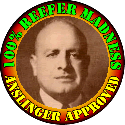
|
“THE MOVIE” ANSLINGER’S ROLE IN ITS CREATION  ADDENDUM – B” This webpage was originally written as an addendum to a book dealing with Anslinger’s Gore File. |

|
|---|
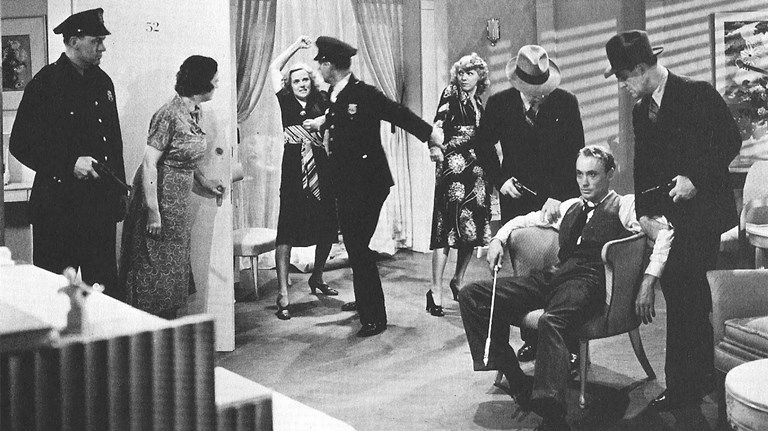
SUMMERY OF CONCLUSIONS:
While it is obvious that some speculation on my part does exist, I am with a 92% degree of certainty that the following information is correct. Whenever possible, all statements are documented to the best of our abilities. That:
-
1)- The movie that we’ve come to know of today as “Reefer Madness” was not one but actually two very different, very distinct film(s).
2)- One (the original) produced/made in 1936 was NOT produced by a church group, but instead by an educational group known as the “International Narcotics Education Association.“ And that its founder/head Richmond P. Hobson (Spanish-American War Hero and rabid narcotics crusader), in all likelihood gave the orders/OK for its production
3)- However, the 1936 version of the film which now has been lost in the sands of time, most likely consisted of a simple 20 minute (one reel) production, shot with 16mm film. And it was intended solely for showing at parental meetings (either before or after a guest speaker), then to be followed by an open-air discussion etc.
4)- The (1938) Dwain Esper version, on the other hand, was a full-length professionally shot motion picture meant for theater presentations.
5)- The evidence being very strong that Harry Anslinger (while providing no financial support) was very much involved in providing technical help for its creation.
REEFER MADNESS THE FILM – AND ANSLINGER’S ROLE:
An issue of no small controversy today deals with WHETHER OR NOT Harry Anslinger and/or his Bureau of Narcotics was in any way actively involved in its creation. Did the Bureau provide financing, technical support, or in any other way encourage its creation? The obvious answer is YES, yet it appears that Anslinger today has many a modern day apologists and/or out and out supporters (mostly ex-narc’s), who insist that Anslinger played no role in the film’s creation. Furthermore they assert that all such statements are mere fabrications, all being made by (those they would term) ‘Groups of Unwashed Hippies.’ Done so (they assert), solely with the intent of maligning/discrediting the former commissioner and his noble goals. To quote but one such individual:
“There is no evidence that Anslinger was involved with the movie “Reefer Madness.” To the contrary, the writers and producers of the 2001 Off Broadway musical by the same name researched the 1936 movie upon which they based their show and believe it to have been financed by an unidentified church group. Anslinger’s agency is misidentified in the movie, too — highly unlikely had the media-savvy commissioner been involved.” [1]While on the other side are those who support repeal of the last vestiges of the Jim Crow era laws, who make the claim that Anslinger and/or his Bureau of Narcotics were up to their necks in involvement. So who is right? --- In answer: The evidence clearly points to Anslinger’s involvement and here we will go through the evidence.
THE DWAIN ESPER, HARRY ANSLINGER CONNECTION:

|

|
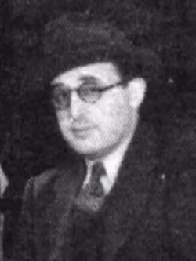
|
|---|---|---|
|
Commissioner of Narcotics (Harry Anslinger) |
Actress Thelma White |
Film Maker Dwain Esper |
Let’s begin by looking over the Dwain Esper (producer of the enhanced 1938 version of the film) Harry Anslinger connection. Just the connection between the two men is more then enough to establish collusion on the film.
Now please, I’m not saying that Anslinger and Esper were good drinking buddies or anything like that. Simply that both Anslinger, who understood the value of good propaganda movies, and Esper, a less then reputable individual who knew the value of making a buck, made for a good working team. Granted it was a “you-use-me-while-I-use-you” relationship, but a relationship never the less. And it appears that they already had a good working relationship LONG BEFORE Reefer Madness came along.
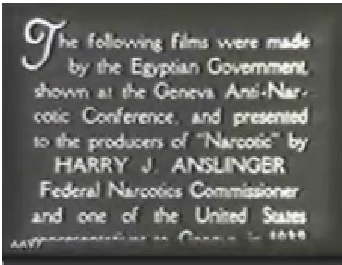
Example: Just read the still scene for Esper’s film sort “The Sinister Harvest” (aka the Sinister Menace).
“The Following Films were made by the Egyptian Government, shown at the Geneva Anti-Narcotic Conference, and presented to the producer of “Narcotic” [2] by HARRY J. ANSLINGER Federal Narcotics Commissioner and one of the United States representatives to Geneva in 1932“And needless to say the PRODUCER of the Film “Narcotic” (1930-1933 depending) was none other than Dwain Esper, thus firmly establishing a tie between the two individuals. A relationship that was further established in an oral interview (given to Eric Schaefer, Nov. 3, 1988) with Mrs. Esper [3]
“Sinister Harvest was a short comprising documentary footage that Mrs. Esper claimed was given to them by Anslinger. It purported to show the debilitating, effects of hashish on Egyptian men and women as well as the methods employed in smuggling the drug.“Now granted, Ms. Esper could have been lying in that 1988 interview, but if so, then wouldn’t it have been a fact that Anslinger (who even his apologists admit was very “Media Savvy”) would have made some public statement distancing himself? He didn’t, so we can presume Ms. Esper was telling the truth. Thus we can also presume that (whatever else) the relationship between Anslinger and Esper was solid enough to allow both to work together on various film projects.
And if yet any more evidence was needed, we must take into account the causal relationship of the movies themselves. Before 1938 Esper made films demonizing Marihuana; note that the Sinister Harvest is of-and-by-itself a mini-Reefer Madness equivalent film if ever there was one. YET shortly after 1938, while others kept making Marihuana themed movies, he mysteriously stopped after that date. Why? The answer is obvious. It’s because his good friend Anslinger gave him a call and told him to do so. Something that, at least from a financial sense, made no sense, but from a political one (wanting to stay in the good graces of the Commissioner of Narcotics) it made lots of sense. For Anslinger (by 1938) the MTA (Marihuana Tax Act) had long ago been passed and the need for a hysteria campaign was long gone. For Esper it meant not only a future source of information, but in a world full of censorship boards, it meant legal cooperation as well. But before dwelling more on this issue, we must first cover some conceptual material, such as the fact that ‘Reefer Madness’ was actually two movies, not just one.
|
LAST MINUTE ADDITION: While doing research on the Esper/Anslinger (ah) friendship, and specifically how it came to be, I’ve uncovered the following: According to the A.F.I (American Film Institute)’s website: [4]
|
REEFER MADNESS – OF TWO MOVIES NOT ONE:
A major fact to be aware of is that the film ‘Reefer Madness,’ the cult classic that you’ve probably seen a dozen times and is now all over the internet. IS NOT the 1936 original version, but the Dwain Esper (expended and reedited) 1938 version. Proof of that lays in the following:
- According to Variety, June 15, 1938 p2. , producer George A. Hirliman announced production of "Tell Your Children" (in a short one sentence article):
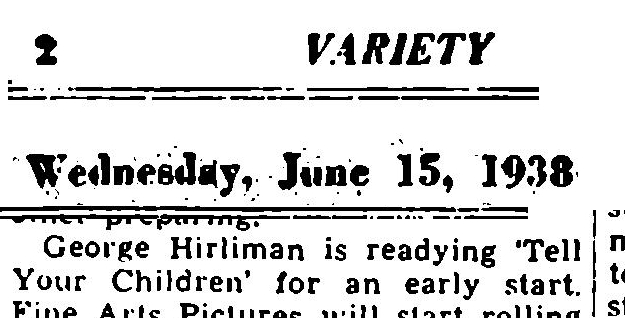
[Variety Magazine – June 15, 1938 p2 [5]]
[“George Hirliman is readying “Tell Your Children” for an early start.”]
As Variety magazine would not be quoting yesterday’s newspaper articles, it is obvious that the file was just about to be released.
- Next, note the following still frame, taken from the movie.
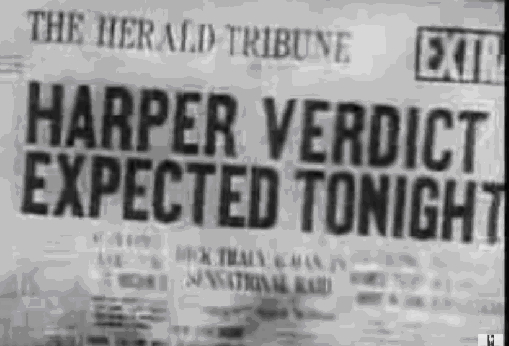
[Still from the Movie Reefer Madness (1938, version) 48:38]
Note that the smaller headline (just below the main one) reads:
“DICK TRACY, G-MEN LEAD SUCCESSFUL RAID” and below that one still another headline referencing one "Trigger Stark”, a clear reference that they are talking about the “Second Dick Tracy” movie/serial that was released in 1938. Thus making (at least that frame) all but impossible to have been filmed earlier than that.
- Then there are the magazines of their day, which as this Nov. 22, 1938 Look magazine shows, is talking about the movie. Something that would not happen if it were yesterday’s story.
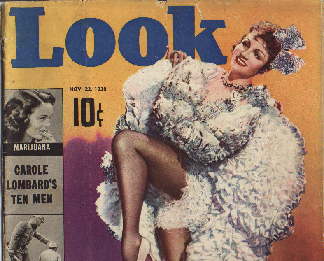
|

|
|---|
Thus there are many factors to indicate that movie shown on collage campus/cult theaters was the 1938, NOT the original 1936 version of the movie.
THE REEFER MADNESS ERA - BEFORE AND AFTER 1938:
So far we’ve covered the following:
- That there was indeed an Esper/Anslinger (working) relationship of one kind or another.
- That the movie known as Reefer Madness is the 1938, not the 1936 version of the movie.
In 1934 Anslinger need a Hysteria campaign to push his agenda through just like he did in 1935, and in 1936, and in 1937. But once the M.T.A. (Marihuana Tax Act) was passed by congress and signed into law, the need was now no longer there. In fact at this point Anslinger was probably well aware (as well as somewhat worried) that many of his lies told during the campaign might sooner or later come back to haunt him. Thus by early 1938, old two-face now did a quick turn around. The idea being not so much to cover up (he knew too much to try doing that), but instead to tone down the whole thing, to make it as bland as possible. In time he figured things would be forgotten with no one even remembering how the laws had gotten on the books in the first place.
Thus what would have been openly endorsed during one time period (before 1937) would have been all but damnable by him in another (after 1938). For instance, presuming he did endorse the creation of the 1936 film, as becomes obvious from the various internal (Narcotic Bureau) memo’s that we’ve been able to locate, what would have been a wanted factor in mid-1936 (at the height of the campaign) would have been very unwanted in mid-1938.
|
ASSASSIN OF YOUTH |
Of interest to the reader is that there are no known Bureau of Narcotics investigations into any pre-1938 Marihuana subjected films. But quite a few thereafter. TRANSLATION: No Way Anslinger would have had any dealing with the 1938 version of the movie, but the 1936 version, now that would have been a different story. But if the rumors about the 1936 movie being the basis for the 1938 version are true and if production were to have begun in 1936, then that would indeed have been a very different story.
FACTORS DEALING WITH THE MYSTERIOUS CHURCH GROUP
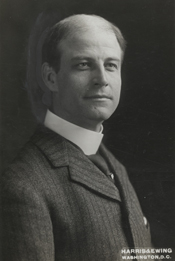
|

|
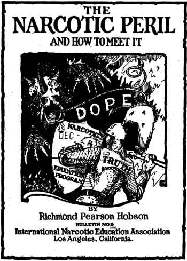
|
|---|---|---|
|
Richmond Hobson (later life) |
Spanish-American War Hero Richmond Hobson |
The Narcotic Peril by R.P. Hobson |
Despite numerous mentions in various articles alluding to a mysterious religious church group as the originator of the 1936 version of the film, it appears that no one seems to know (including Anslinger apologist’s) exactly who or what this religious group was. In fact, it appears that no one even seemed to know its name, let alone anything about it. --- Hummm! A situation that at first led this author to question whether or not such a group even existed. So the best place to begin is by tracking down the source of the information and/or rumor.
Most accounts credit the source of this information as having come from Thelma White, the actress who played the role of Mae in the movie. According to the American Film Institute website: [6a]
“According to a modern interview with Thelma White in a 1987 (Los Angeles Times- Feb 15, 1987p2) article, she earned approximately $2,500 per week from R.K.O. for this film, which was produced in three weeks by a religious group . Although George A. Hirliman was associated with RKO, it has not been determined if RKO specifically contributed to the production of this film.”However, the actual wording as per the L.A. Times article was as follows: The movie, called “Tell Your Children,” was written by a religious group and filmed in three weeks.
Meaning that Ms. White was not actually being quoted about the ‘Religious Group,’ but instead it appears the article’s writer simply inserted the statement from what was though to be common knowledge. Also it should be noted that the article in question (which interviews Ms. White some 50 years after the movie) had various technical errors such as quoting the actual date of filming as being 1935, etc. Likewise as per an internet website:
“According to author John Cocchi in his book "Second Feature" , Thelma White told him she was loaned in 1938 from RKO to do the film. According to her, the film was written by a religious group and shot in three weeks. “
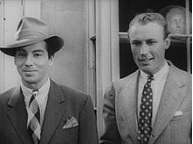
But, what the late Mr. Cocchi actually wrote (ironically on page ‘1936’) was:
“Carleton Young *, claims that she’d been loaned by RKO in 1935 to make the film. It had been written by a religious group and shot in three weeks. Original story is credited to Lawrence Meade, with Arthur Hoerl and Paul Franklin contributing to the screenplay (all have other Hollywood credits), the sensational aspects of the plot---rape, murder, insanity---probably wouldn’t be sanctioned by many religious groups.”
So at least according to him, it was the character actor Carleton Young, who was the actual originator of the story. Also (again according to Cocchi) Young stated that the Film was shot in 1935 which as stated previously would not have been possible in the Dwain Esper version of the film. However, AGAIN, these statements came from a reputable source.
* The guy on the left who played the role of Jack Perry in the film.
YET DOUBTS EXIST:
While it is now just about taken for granted that a ‘Religious Church Group’ of one kind or another was responsible for the origination of the film ‘Reefer Madness.’ I for one (at least for a while) had my doubts. As previously mentioned, the sole (alleged) source of the information comes from oral interview(s) with the actress Thelma White, but more probably from Carleton Young and these were done some 50 yrs after the fact. --- Now please, I’m not saying that either Thelma or Carleton didn’t say something or another to that effect. Nor that s/he didn’t tell it the way they believed it to be, I’m simply pointing out that there’s something that just doesn’t ring right about the whole thing. Granted the source(s) is reliable, but that does not mean accurate.
Let’s look again at what the American Film Institute has to say: [6b]
“According to a modern interview with Thelma White . . .she earned approximately $2,500 per week from RKO for this film, which was produced in three weeks by a religious group.”Right off the bat, this should tell us that something is terribly wrong with the whole “a small church group” and NOT Ansligner was responsive for the movie idea. Just the financial perspectives are enough to make one look twice at the whole thing:
- Financial Costs: Presuming that Thelma was indeed getting $2,500 a week for each of the three weeks of actual shooting. That would mean she made (3 x $2,500) = $7,500. Now assume all the other BIG NAME actors involved were also making the same, that would mean (6 x $7,500=) $45,000 which at a time when the average new home in American sold for less than $4,000 can be considered quite a bit of money. And that would ONLY have been for the main actors. Now doubling that to cover the cost of the minor actors, stage hands, camera people, etc., and you’ve now run the bill up to around $90,000. And who knows how much the films director, scriptwriter, producer etc., were making. --- Then last of all there was the R.K.O. facility/equipment rental, which in all probability would double even that. My estimate; --- The minimum costs of producing this file was no less than $200,000 in 1936 dollars.
- Point Being Made, maybe by Hollywood standards this must have been a low budget movie, but by church group standards (especially during the middle of the great depression), this must have been quite an expensive little project to undertake. Something that no church group could realistically have undertaken. At least not without some kind of massive fundraising effort of one kind or another, but such a fundraising effort of-and-by itself would have left a paper trail, to which none has been noticed.
- Church Volunteers: Next let’s look at the actors. No offence intended but a quick scan shows that none of the actors were partially religious or spiritual in nature. Everything indicates that they just saw this as a paying job of one kind or another. Question: Is this the way a church group operates? I mean, if there’s one thing that church groups have in abundance is volunteers. And granted not all of them would make good actors. Still (if a church group really was responsible), logic and reason dictates that at least a few of them would have made their way into the film in one form or another. Simple economic factors would dictate that volunteers are cheaper than Hollywood labor.
- Lack of Church Interference: In the movie, “Ed Woods Hollywood,” Ed Wood manages to convince a religious group to finance one of his films. HOWEVER, with the financing comes church interference. In this case coming in the form of an unwanted pastor or two telling Ed Wood (on the set) things like: “We don’t like this wording,” . . “This is an act of sacrilege,” . . . “No, No, No” . . . “You must change the script,” etc. --- Okay, with the money come the strings so that was to be expected. But in our case it also begs the question, where were the strings? How did this neo-porno film ever escape?
- Film Type & Quality: Given the actual expenses of shooting 35mm picture films (requiring high quality cameras, etc.), and given the fact that this picture was only originally meant for small church audiences. One must wonder why the much less expensive 16mm or even 8mm (amateur) film size was not chosen. --- [CONCLUSION: Unless this church group had a lot of money to burn, in all probability, the original 1936 was probably done using the much cheaper equipment.]
- Film’s Length: Now lets look at the film’s running time or length. Recalling that (assuming the church group story is true), the film was intended to be shown to parents groups; -- we assume to small audiences such as PTA, Church meetings, etc. We can therefore accept a reasonable running of say 20 minutes or maybe even 35 minutes (after which oral discussions would follow), but a running time of well over an hour – no way. ---- [CONCLUSION: The original (1936) film probably had a much, much shorter running time which was enlarged and expanded upon for the 1938 version]
- Why Rent Out RKO’s Studio Lot; E-X-P-E-N-S-I-V-E : - Why not use people’s houses, the inside of church buildings, parking lots etc. Okay, if anyone’s ever seen “Ed Woods Hollywood,” you’ll know that a church group really can/does finance professional filmmakers as well as rent out space in movie studios. However again, the question still remains WHY? In general church groups just don’t have money to burn.
NOTE: It does appears that RKO was having a bit of financial turbulence during this time period, so (maybe) out of desperation, they rented their lot out for a song and a dance.
- The Sensational Story Line: Then there is the very nature of the story line or script, which by 1936-38 standards was somewhat risqué. Question; Does anyone out there really believe that ‘a church group’ of any legitimacy would have anything to do with it? Especially as the 1936 film was meant to be shown in small church auditoriums. [CONCLUSION: Either there was no church group involvement or a massive re-write was done after Esper took over the project.]
- Lack of Church Publicity-1: If the story about the origins of this movie is correct then logic and reason dictate that Dwaine Esper, a savvy businessman if ever there were one, would have taken full advantage of this fact, especially as various state censorship boards were very active in those days. Having and advertising the respectability of a church organization behind the movie wouldn’t have done any harm as well as made good business sense. [CONCLUSION: Either there was no church group involvement or the ‘terms of transfer’ agreement included a nondisclosure agreement.]
- Lack of Church Publicity-2: A good faith search of 1936-1937 newspaper ads, church bulletins etc., has failed to turn up anything dealing with the movie. Granted our access to such things are limited but still; --- Assuming a church group of one kind or another was involved, one would at least expect to seen some kind of church ad for the movie, or at least some mention somewhere. Yet nothing.
CONCLUSIONS SO FAR:
- While it is conceivable that some sort of ‘Religious Church Group’, did indeed originate the production of the film, HOWEVER most factors indicate otherwise.
- The main if not the sole originating source for the ‘Religious Church Group’ story is alleged to be the actress Thelma White, as orally expressed in at least one interview (with few details) from memory some 50 years after the fact. But as already mentioned, it was actually Carleton Young. But in either case, both being solid sources that were there at the time.
BUT HOW DO WE KNOW that it was Richmond Hobson’s organization that was behind the movie? The answer, as Sherlock Homes would have said, “is very elementary my dear Mr. Watson”. First you examine the facts and then remove the impossible. Thereafter whatever else is left, no matter how improbable, has to be it. Using this form of logic we make note of the following:
- That Anslinger’s Bureau could not have been the original source of funding, especially as their budget was never that big and should he have, such an act definitely would have shown up on some accounting ledger somewhere of some kind or another.
- We can also eliminate the idea that Anslinger coerced another governmental agency to provide the funding. Even back then governmental rules and regulations would have all but prohibited such a thing from occurring and again had it happened it would have shown up in some accounting ledger somewhere.
- Then we can also eliminate the idea that Anslinger somehow arm-twisted a State agency (within the State of California) into providing the money. Given the economic depression that was going on at the time, just about every state agency was strapped for money.
- Next, as previously pointed out, while we can’t with 100% certainty rule out the possibility of a religious church group as the original funding source, it is highly improbable that this was the case.
- Then there’s Dwain Esper himself as the source of the funding. According to Eric Schaefer, [3B] “In conversations, David Friedman has indicated to me that Dwain Esper put up the production funds for Reefer Madness, although I have not located independent confirmation of this.” However, this would imply that he helped finance (or more appropriately, found financing for) the shooting of the 1938 version, NOT the 1936 version. -- Furthermore in 1936 Esper (busy with another movie having the appropriate title of “Marihuana”) would have been in no financial position to have financed a second movie.

|

|
|---|
In other words, they were true believers that would have done even Harry Anslinger proud. Just look at what’s in there - axe murderers, shootings, sellers of tamales . . . etc., and ALL under the influence of Medical Cannabis. --- So there definitely was the will to produce such a movie. In addition:
- They were (sort of) a religious group and while not an official church, let’s just say that (like so many other groups at the time) they had religious leanings.
- Hobson’s group(s) also had a HISTORY of producing such films. Example; According to the “World Narcotic Defense Association/International Narcotics Education Association (both were essentially one-and-the-same group), annual conference report for the year 1936:
“. . we have been able to exhibit one reel of 16mm moving picture film which the Department of Health produced last fall. The film will provide a means of identification of Cannabis (Marihuana) which can be used throughout the State (state unknown, but probably N.Y.) to aid in enforcement. We are also furnishing some illustrations to every police executive in the State to be posted in his precinct in order that officers may familiarize themselves with the plant.” --- April 13, 1936 – conference:
So the group had already helped to produce some films; --- in the past tense. And while not in a position to produce them on their own (few volunteer actors, producers, camera’s, etc.), they were in a financial position to hire out such services.
- Next, let’s point out that this particular group was based in Los Angeles. Putting it right next to Hollywood or in an ideal location for the film’s initial creation. The initial (1936) version of the film was probably a semi-professional/semi-amateurish, maybe two-reel 16mm production. A film intended solely to be presented before parental (PTA styled) audiences. Still, being right next to Hollywood meant they had access to numerous essential requirements for such a film.
- In addition, there were (relatively speaking) well funded. Meaning they could afford to pay the production costs of a film.
THE 1936 MOVIE VERSION:
As there are no copies that we know, we don’t know that much about the original (1936) Film. As the name Reefer Madness (as well as Tell Your Children, etc.), would not come along until some four or so years down the line, we don’t even know what its original name was. But we do know a lot about it by analyzing what we don’t know , or was never said about it:
-
1)- We know that it wasn’t a major production. Had it been there would have been some mention of it in a trade magazine of one type or another. Thus we could presume that instead of a high guilty 35mm, 1½-hour film, that it was instead a lower quality 16mm, 20-minute (maybe only one reel) production.
2)- We know that no “High-Quality” professional actors were involved or else we would have heard of it. – Now don’t get me wrong. I’ve seen several “High Quality”, short films that made use of various volunteer actors, not to mention volunteer directors, writers, etc. However (in a reversal of fortune) in this particular case, we can safely presume that whatever unknown volunteer actors took part in the 1936 version of the film, their acting skills were such that they remained unknown after the film.
3)- We know that no newspaper advertisements, or mentions occurred. Thus we can presume that it never made its way into the public theaters. [Once more confirming that 16mm nature of the film]
4)- Additionally, we also know that (after a cursory, but good faith effort) no church advertisements, no PTA bulletins, no civil group announcements were ever made regarding the films showing. Meaning that right from the get-go, it was a real turkey
5)- We thus can presume that even the original script was a bit too salacious for most parental groups, no matter what the context.
6)- Thus we know that the film was not only NOT shown in theaters, and due to its script probably didn’t even make its way toward its intended audiences, those being small parental associations.
7)- Thus the 1936 original must have been, by any measure, a real turkey if ever there was one.
8)- Thus, we can presume that very few physical copies of this film were ever made. And those that were, (again probability) just sat in some cabinet at the INEA headquarters (995 S. Western Ave, in Los Angeles) somewhere and went no further. --- That was until someone suggested letting Dwain Esper (producer of the 1936 movie “Marihuana”), look it over. After all, he had a lot of contacts with the narc’s and as such was the natural chose to resurrect and maybe even recoup their initial investment in the film.
|
Question: Does a copy of the 1936 film still exist? Answer: Not that we know of. However, recalling that the original 1910 version of the film “Frankenstein” was thought lost forever. That is until someone found a copy of it in an attic somewhere. Thus there is no question (at least in my mind) that a copy of it will one day pop up. However, we must also be realistic. Probably no more than say 16 copies of it would have been made and maybe not even that. Especially when the INEA figured out what an albatross they had on their hands, there’s a good chance that most copies were chucked into a trashcan somewhere. But still, just like some of the INEA’s literature has survived, so too I am sure that a copy of the film (somehow, someway) also survived. Either the Esper estate, or an old film studio, or some obscure educational library somewhere has a copy. |
SO TO SUMMARIZE:
We know that original (1936) film was a stinker right from the get-go. One that (by definition) made use of lousy actors, low quality film, you name it. But look at it this way, it was but one of many projects for them.
THE 1938 MOVIE VERSION:
The story behind the 1938 version of the film almost runs like a comedy of errors. Most probably (referencing the initial 1936 film), those running the L.A. branch of the “International Narcotics Education Association” (and probably Hobson himself) must have quickly realized what a turkey they had on their hands. --- Apparently young boys grabbing axes and chopping up the whole place was acceptable in the written format but not so much on film, especially if young naked ladies are running around all over the place, etc. Judging by the total lack* of civic/church/PTA notices/bulletin board ads, we can safely assume that the film was a total loser and actually could have been a negative talking point, preventing INEA speakers from even being invited.
* We are not saying that none existed, only that (after a good faith cursory check) we couldn’t find any.
So, what to do? The obvious solution would have been to chuck the whole thing in the trashcan and simply forget about it. However as fate would have it, another destiny awaited the film. Somehow, someway, movie mogul (or mongrel whatever) Dwain Esper got his hands on a copy (probably via his narcotics bureau friends) and the rest is history.
Well actually not, there were still some snafus:
- In all likelihood Esper originally heard about/obtained a copy some time probably in 1936. However by all indications he was busy at the time with numerous other film projects. Too busy to have seriously devoted any time to a one-reel short. Especially as he himself had just produced a marijuana themed movie of this own (“Marihuana” 1936), and probably thought that any competition was not in his best interest anyway.
- However, there must have been something about the original that caught his eye. The fact that it had originated via one of anti-narcotics crusader Richmond Hobson’s groups gave it a better chance of getting through the then pesky-state-censors and the fact that no copy-right existed didn’t hurt any either.
- Thus, probably around late 1937 Esper began a total redo of the film, keeping some of the original script/intent such as the speeches by Dr. Alfred Carroll (by the way, no such animal in real life) at the start and end of the movie about the evils of Medical Cannabis.
From what I’ve been able to gather, Esper’s version of the film was an ‘on-again/off-again’ production, not ready for filming until the early part of 1938.
- In addition, where exactly Esper got the money to actually produce the film remains a mystery to this very day. According to Dave Friedman [3C] a contemporary filmmaker along side Esper, it was Esper himself who financed the whole film. However that answers nothing. Where exactly did Esper himself obtain the funds? From the narc’s, from the INEA, etc.?
-
1)- That the whole of the original film, while keeping (sort of) to the original script was for our purposes; totally rewritten.
2)- Unlike the original, the 1938 version made use of paid actors who were selected (probably) at random from RKO studios (and again probably) because they were available.
3)- RKO (probably) allowed their studios to be used for the filming because they were having some economic issues at the time.
4)- By anyone’s account, the film (despite the high pay its main actors were getting) was a pretty low budget movie.
5)- The original name (by all accounts) was “Tell Your Children,” but it was quickly changed in some areas to “The Burning Question” which was a common expression back throughout the 1910’s, and 20’s. The name “Reefer Madness” would not come along until around 1941.
THE REEFER MADNESS ERA - BEFORE AND AFTER 1938:
So far we’ve covered the following:
-
That along side a good working relationship with local Los Angeles narcotics offices, there was indeed an Esper/Anslinger working relationship of one kind or another. Thus we can presume that Anslinger, either directly or through his agents, did indeed offer or gave at least technical assistance as needed.
- That the movie known today as Reefer Madness was in fact filmed in 1938, not 1936.
- We’ve also covered the technical differences between the two versions of the films as well as why one failed while the other succeeded.
Because, it HAD to exist and all the evidence that isn’t there establishes this as a fact. Okay, in case you’re lost, let’s once again turn to Sherlock Homes, let’s begin by examining the facts, eliminate the impossible and Va-La, the film (no matter how improbable) had to exist. And in case you’re still lost, let’s go over this in step by step:
-
1)- In 1934 Anslinger needed a Hysteria campaign to push his agenda through. Just like he did in 1935, and in 1936, and in most of 1937. And a hysteria campaign means just that, hysteria. We’re taking about scantily clad young-girls jumping out of windows, crimes of the most brutal nature, we’re talking about . . . .in other words, a movie like Reefer Madness.
2)- But once the M.T.A. (Marihuana Tax Act) was passed by congress and signed into law (Late 1937), the need for such a hysteria campaign was now no longer there. In fact by this point Anslinger was most certainly well aware (and probably worried) that many of the lies he had told during the campaign might sooner or later come back to haunt him. Thus by early 1938, old Two-Face now did a quick turn around, the idea being not so much to cover it up (he knew too much to try doing that), but instead to tone down the whole thing. To make it as bland as possible. In time he figured, things would be forgotten, with no one even remembering exactly how the laws had gotten on the books in the first place.
3)- Thus what would have been openly endorsed during the hysteria campaign (pre-1938), would have been all but damnable by him in another era (after 1938). For instance, presuming he did endorse the creation of the 1936 film, as becomes obvious from the various internal (Narcotic Bureau) memo’s that we’ve been able to locate, what would have been a wanted factor in mid-1936 (at the height of the campaign) would have been very unwanted in mid-1938.
4)- Thus what would have openly endorsed during the hysteria campaign one time period (before 1937) would have been all but damnable by him in another (after 1938). A situation that becomes obvious to anyone who so much as glances over any of the now released internal memo’s generated by the Anslinger’s bureau shortly after 1938.
SEE INTERNAL (Bureau of Narcotics) MEMO
ASSASSIN OF YOUTH
As this internal memo shows, what Anslinger’s Bureau openly tolerated as well as encouraged in 1936 (at the height of the Reefer Madness Campaign) was now taboo by 1938.
Simply put, Anslinger was now trying hard to censor the very same films he had previously helped create in the first place. In addition (of interest to the reader) is the fact that there are no known Bureau of Narcotics investigations into any pre-1938 Marihuana subjected films;--But quite a few thereafter.
5)- Which now brings us to the actual movie(s) ‘Reefer Madness’ itself. Which, being made both BEFORE and AFTER the passage of the Marihuana Tax Act, made it quite a fluke even for Anslinger to deal with. And to add to the problems, both films had been produced by friends/ acquaintances with whom Anslinger had established a good working relationship with. A situation which therefore made it all but impossible for Anslinger to have gone after the film like he had with so many others. --- Simply put, should he have tried to have the movie censored, the fact that he had help with its production would have come up . . . embarrassing . Need proof? Just look at the following internal memo and note how Anslinger was all too aware of the move Reefer Madness. The memo (while not stating so) also implies that this one movie was to be left alone.
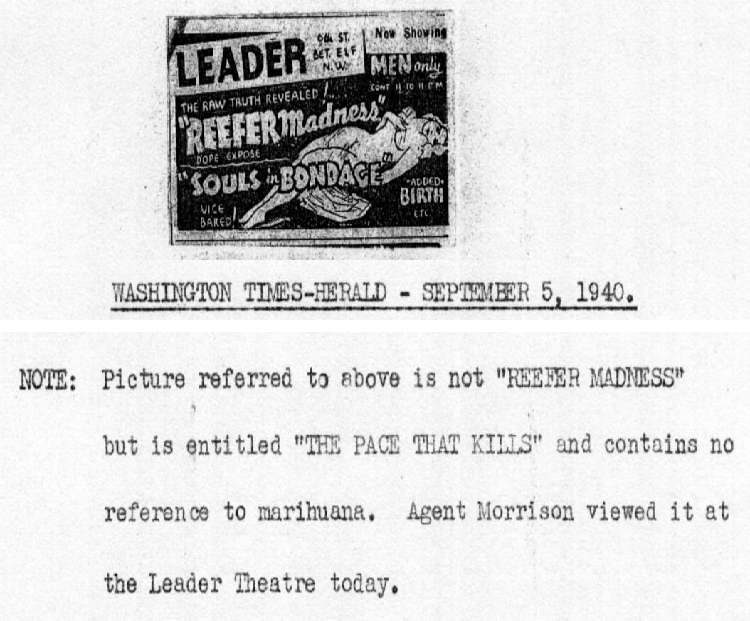
[Source, National Archives, College Park, Md.]
TRANSLATION: No Way Anslinger would have had any dealing with the 1938 version of the movie, but the 1936 version, now that would have been a different story. A factor that explains why he didn’t go after (through censorship boards) this one film, like he had with so many others. Further proof could be found in an obscured factor; Why Esper produced NO OTHER “Marihuana themed” movies thereafter. --- Again, why? In all probability, it was because his good friend Anslinger gave him a call and asked him not too. And granted, from a financial standpoint such a decision made no sense. From a political point of view, it made a lot of sense. After all, one couldn’t tell when one would need a friend in high office. --- There really isn’t any other explanation, thus my certainty that the 1936 film did indeed exist.
TO SUMMARIZE; The 1938 version of the movie, while baring some relationship to the original 1936 version, probably should be thought of as a totally separate movie. Not just an extended and re-edited version of the first.
TRIVIA – During the war years, there was a mass shortage of porno-movies, just when everyone needed them the most. (something about everyone in the film industries doing other stuff at that time) Thus, practical people like Esper began recycling old movies to fill that gap and needless to say, “Reefer Madness” was there.
===========
FOOTNOTES:
[1]- As per https://www.questia.com/newspaper/1P2-36686108/real-myths-about-marijuana-harry-anslinger-is-being
[2]- Narcotic (1933) was one of Dwain Espirs earlier films.
[3]- “BOLD! DARING! SHOCKING! TRUE!” by Eric Schaefer p231:
[3B]- Ibid, in footnotes No. 55/56, chapter 6, Page 427
[3C]- Ibid, in footnotes No. 56, chapter 6, Page 427
[4]- https://catalog.afi.com/Film/7424-NARCOTIC?cxt=filmography
[5]- https://archive.org/details/variety130-1938-06/page/n115 page 2 June 15, 1938 Variety
[6a,b]- American Film Institute - https://catalog.afi.com/Catalog/moviedetails/7885
WANT TO KNOW MORE:
=====================
Due to space / download time considerations, only selected materials are displayed. If you would like to obtain more information, feel free to contact the museum. All our material is available (at cost) on CD-Rom format.
CONTACT PAGE
 BACK TO MAIN INDEX PAGE |